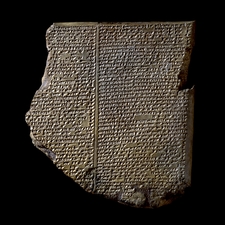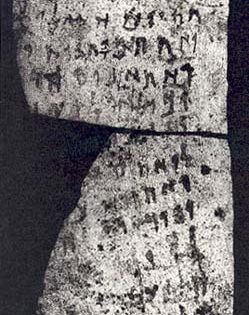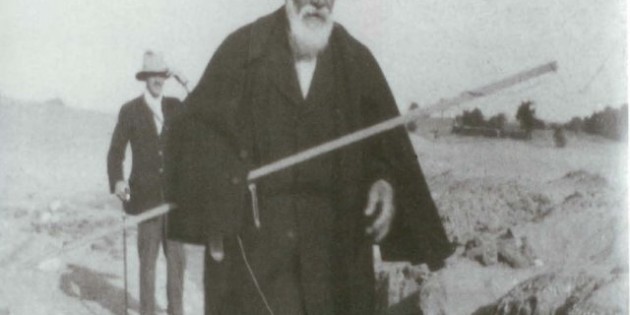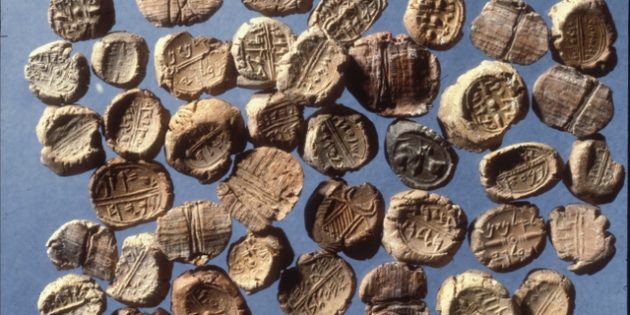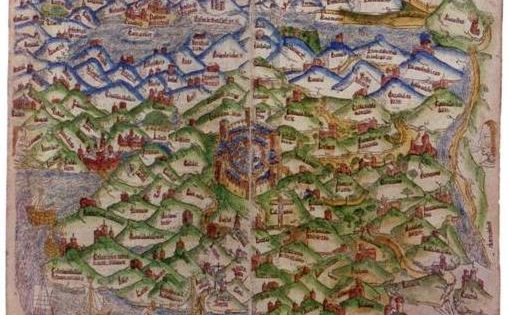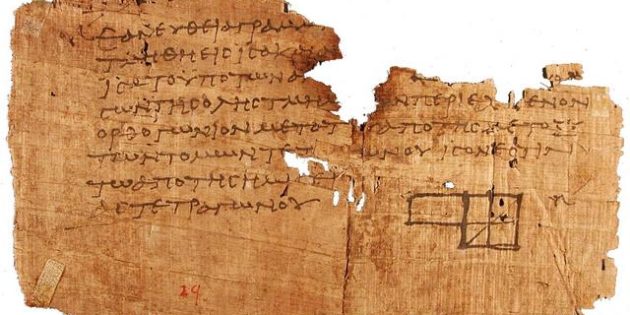Home » Archives for November 2008
Archive for November, 2008
King Ashurbanipal built a royal library in Nineveh in the 7th century BCE. British archaeologists, headed by Austen Henry Layard, found about 20,000 clay tablets beginning in 1849. The tablets were shipped to the British Museum, where they lay for close to 50 years before Assyriologists were able to decipher them. Found among these tablets […]
Gift to the Community Ostracon “Gift to the Community” Ostracon found at Qumran in 1996 by a volunteer on an expedition led by James F. Strange. It was translated by Frank Moore Cross and Ester Eshel. “The Missing Link,” BAR Mar-Apr 1998.
Ishtar Gate 1 Ishtar Gate 2 Ishtar Gate Close-Up The Ishtar Gate was the eighth gate to the inner city of Babylon. It was constructed in about 575 BC by order of King Nebuchadnezzar II on the north side of the city. It was considered one of the seven wonders of the world until it […]
The Sinai Turquoise Mines The ruins of Serabit were first discovered by Carsten Niebuhr, a member of an early Danish expedition, in 1162. Later they attracted the attention of numerous scholars, the most famous of whom was Sir Flinders Petrie, who explored the site in 1905. In 1935 the Czech scholar Jeroslav Cðerny made a […]
Protestant Cemetery in Jerusalem. Photo courtesy of BiblePlaces.com. Sir Flinders Petrie Beginning in 1896, the Protestant community of Jerusalem buried its dead in the backyard of the Bishop Gobat School (today Jerusalem University College). The cemetery was in use until the end of the British Mandate. Among those buried in the cemetery- Reverend Michael Solomon […]
Seal Rings and Bullae from the End of the First Temple Period The most important item an administrative official had in the Iron Age in the Ancient Near East was his seal ring. A ring seal is a ring made of some metal with a stone affixed to it that had the name, title, and/or […]
First Map of the Holy Land Close-up, showing Jerusalem The First Map of The Holy Land and The First Modern Printed Map Holy Land, Brandis, Lucas. Map Of Palestine. Lübeck- Brandis, 1475, from Rudimentum Novitiorum sive Chronicarum Historiarum Epitome, 1475. In 1475 (some 25 years after the invention of printing from moveable type) Lucas Brandis […]
Findings from the Burial Cave Chalcolithic Era (4500-3200 BCE) burial cave. The cave was unearthed in 1995 when a bulldozer accidentally broke through its ceiling during construction of a road in the upper Galilee village of Peqi’in. Archaeologists from the Israel Antiquities Authority (IAA) discovered tens of thousands of pottery fragments strewn about the 50-foot-long […]
Eudocia Inscription Eudocia Inscription in situ Eudocia was the wife of the Byzantine emperor Theodosius II (408 A.D.–450 A.D.). She lived in Jerusalem. Written in Greek on a large marble slab embedded in the floor of the Hall of the Fountains, the Eudocia inscription consists of 17 lines. The first line contains the name of […]
One of the oldest and most complete diagrams from Euclid’s Elements of Geometry is a fragment of papyrus found among the remarkable rubbish piles of Oxyrhynchus in 1896-97 by the renowned expedition of B. P. Grenfell and A. S. Hunt. It is now located at the University of Pennsylvania. The diagram accompanies Proposition 5 of […]

